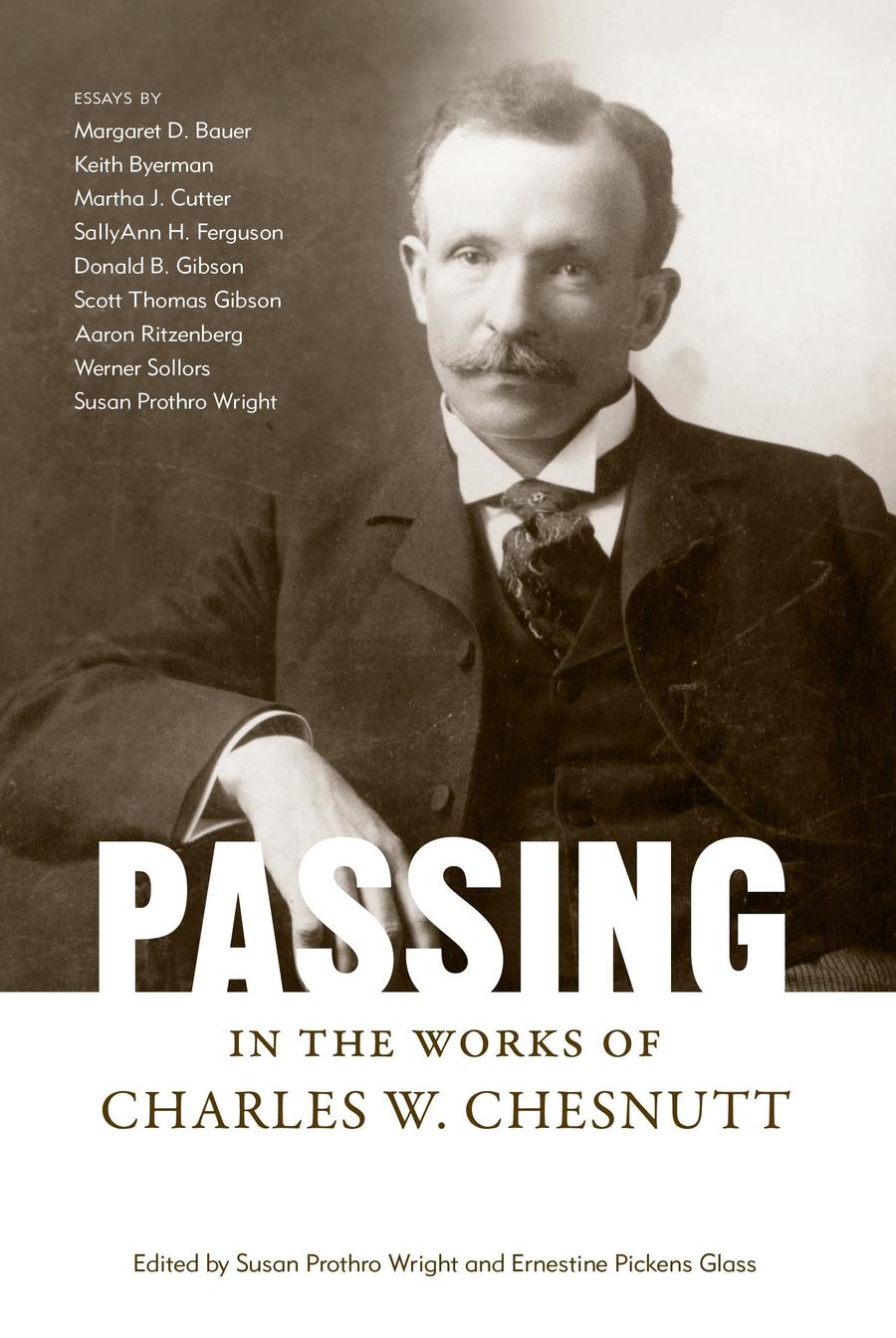Passing in the Works of Charles W. ChesnuttPosted in Anthologies, Books, Literary/Artistic Criticism, Media Archive, Passing, United States on 2010-02-19 21:32Z by Steven |
Passing in the Works of Charles W. Chesnutt
University Press of Mississippi
March 2010
160 pages (approx.)
6 x 9 inches, introduction, index
Printed casebinding: 978-1-60473-416-4
Ebook: 978-1-60473-418-8
Edited by:
Susan Prothro Wright, Associate Professor of American and British Literature
Clark Atlanta University, Atlanta, Georgia
Ernestine Pickens Glass, Professor Emerita of English
Clark Atlanta University, Atlanta, Georgia
An exploration of a great American writer’s abiding concern with the color line
Essays by Margaret D. Bauer, Keith Byerman, Martha J. Cutter, SallyAnn H. Ferguson, Donald B. Gibson, Scott Thomas Gibson, Aaron Ritzenberg,Werner Sollors, and Susan Prothro Wright.
Passing in the Works of Charles W. Chesnutt is a collection that reevaluates Chesnutt‘s deft manipulation of the “passing” theme to expand understanding of the author’s fiction and nonfiction. Nine contributors apply a variety of theories–including intertextual, signifying/discourse analysis, narratological, formal, psychoanalytical, new historical, reader response, and performative frameworks–to add richness to readings of Chesnutt’s works. Together the essays provide convincing evidence that “passing” is an intricate, essential part of Chesnutt’s writing, and that it appears in all the genres he wielded: journal entries, speeches, essays, and short and long fiction.
The essays engage with each other to display the continuum in Chesnutt’s thinking as he began his writing career and established his sense of social activism, as evidenced in his early journal entries. Collectively, the essays follow Chesnutt’s works as he proceeded through the Jim Crow era, honing his ability to manipulate his mostly white audience through the astute, though apparently self-effacing, narrator, Uncle Julius, of his popular conjure tales. Chesnutt’s ability to subvert audience expectations is equally noticeable in the subtle irony of his short stories. Several of the collection’s essays address Chesnutt’s novels, including Paul Marchand, F.M.C., Mandy Oxendine, The House Behind the Cedars, and Evelyn’s Husband. The volume opens up new paths of inquiry into a major African American writer’s oeuvre.
